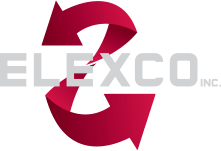*This is an excerpt from Heavy Equipment Magazine.
View the full magazine here: https://issuu.com/baumpub/docs/heg_june_2021
North America has, through the COVID-19 pandemic, been reminded of the need for good, easily accessible internet services. A growing demand for remote services of all kinds, from e-commerce to education, is driving continued growth in internet installation. The backbone of that is fibre-optic cable, and contractors in urban and rural regions of the continent are busy trying to keep up.
Add to that the coming 5G networks, and the need for fibre installation – and the equipment that aids contractors to place that cable – remains strong.
Fibre-based telecommunications networks aren’t just about internet access; they are also being used for industrial applications and many others, relayed Steve Seabolt, product manager with Ditch Witch.
“At the core of fibre based networks originally was telecom, but as we moved away from a copper-based network. . . there were so many drivers beyond that,” Seabolt said. “We see large pipeline customers wanting to install fibre-optics within a close proximity to pipelines because it can be used as a sensing device. You can monitor for leaks, third party intrusion, or damage. It was a technology being used for border protection, smart highways and monitoring traffic patterns. There are lots of different applications.”
Much of the focus of fibre installation has been in urban areas thus far, especially with businesses driving for gigabit internet access and growing population densities as well as cellular and data networks in the drive toward 5G. Rural areas will continue to build out for quite some time to come, Seabolt projected, for both homeowners and large farming operations that have growing data needs as well.
Initially, fibre installation was focused on big trunk lines, but today with efforts to get fibre into households and businesses, installation efforts have become more challenging – and more precise.
“This latest boom, as we have added more capacity and attempt to connect every business and residence, has been a more blended approach. You get into confined spaces and more areas where either open cut is not acceptable due to traffic disruption, noise or dust, or you run into crowded easements where, in some neighborhoods, are under a sidewalk or a homeowner’s rose bushes,” Seabolt said. “Under the ground, there are already a number of utilities – it could be a quite congested easement already. So, directional drilling remains a huge part of that solution.”
Keep reading: https://issuu.com/baumpub/docs/heg_june_2021 (page 42)



